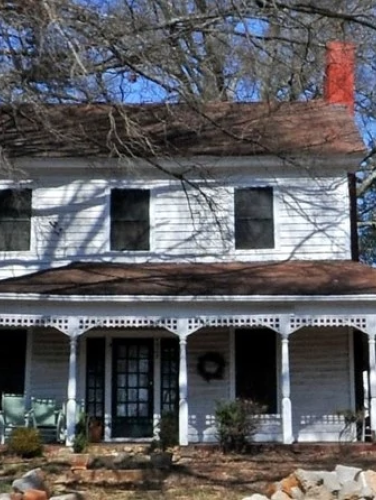
Richard Wearn House
(ca. 1846)
The Richard Wearn House evidences the brief success of Charlotte’s gold mining industry during the early to mid-1800s.
4928 Tuckaseegee Rd, Charlotte, NC 28208
Richard Wearn (1798-1851) – a native of Cornwall, England’s southwestern-most county – settled in Mecklenburg County in 1831. Cornishmen traditionally earned their livelihood either from the sea or from mining. In the nineteenth century, however, the Cornish mining industry began to languish. Like many Cornish miners compelled to search for new areas in which to practice their customary trade, Wearn left Cornwall in the early 1800s.
Property Quick Links
Wearn initially settled in Gatehouse of the Fleet, Scotland, a center of tin mining. There he met and married Henrietta Thomson Wearn (1803-1847) in 1822. Soon thereafter, Richard, Henrietta, and their first child came to the United States. It is likely that their 1831 move to Mecklenburg County, nine years after the family’s arrival in this country, can be attributed to Charlotte’s emergence as a major center of gold mining. By 1830, several gold mines had been upgraded or established in the area, including the Capps mine, the Dunn mine, the St. Catherine's mine, the Yellow Dog mine, and the Rudisill mine. The excitement engendered by these activities intensified in 1831, when a veritable “nest of gold” (some 120 pounds of gold) was discovered near Charlotte. Also indicative of the growing importance of gold mining in Mecklenburg County in the 1830s was the decision by the federal government to locate a branch of the United States Mint in Charlotte.
Richard Wearn prospered as a Mecklenburg County gold miner. In 1837, he purchased land from William Polk on what is now Tuckaseegee Road. There he erected a log house to accommodate his wife and their children. About ten years later, he built a larger home on the same tract. That structure comprises part of what is now known as the Richard Wearn House.
Both Henrietta and Richard are buried in Charlotte’s Old Settlers Cemetery. Following their deaths, the Wearn House was sold to W. W. Elms to settle the Wearn estate, but the house was soon purchased by J. B. McDonald. He gave the property to his daughter Mary Elizabeth and her husband George Henry Wearn (1834-1898), a son of the house’s original occupants Richard and Henrietta. Following George’s death, the house was sold to Rufus Holland Reid, again to settle an estate. That transaction marked the end of the Wearn family’s association with the house. However, the contributions of the Wearn family to the development of Charlotte and Mecklenburg County have persisted, as the descendants of Richard and Henrietta have since excelled in a range of pursuits, including medicine, engineering, architecture, and politics.

